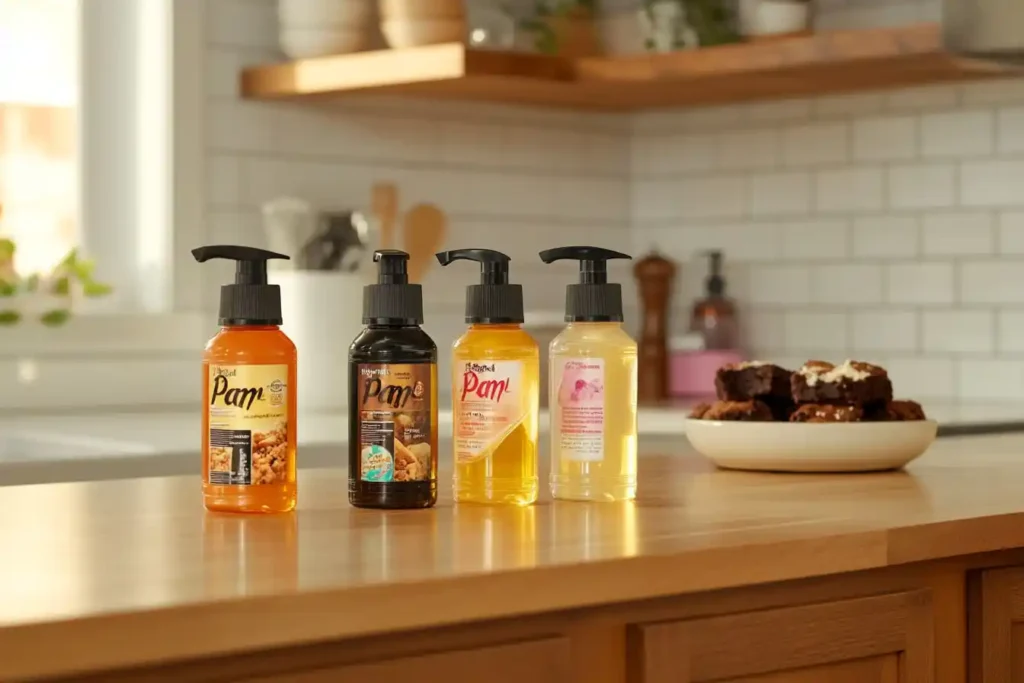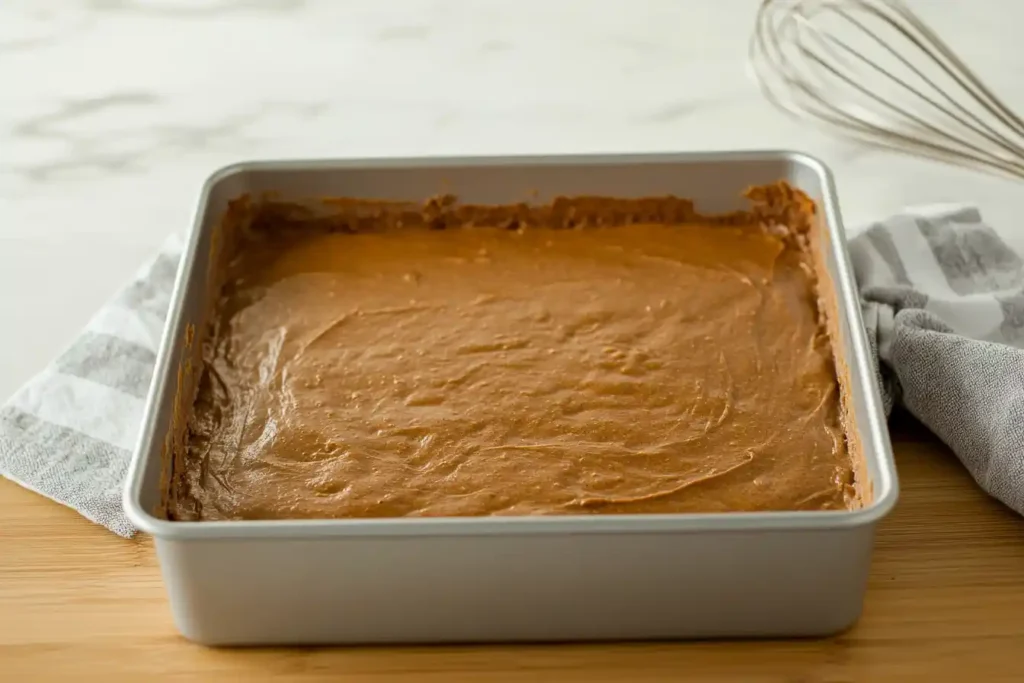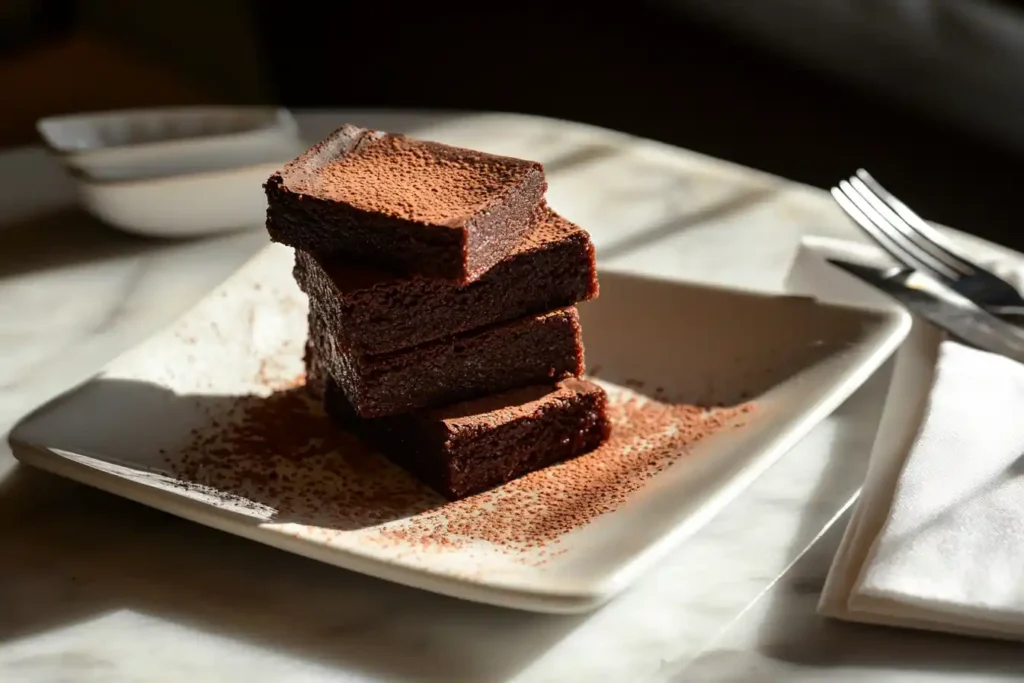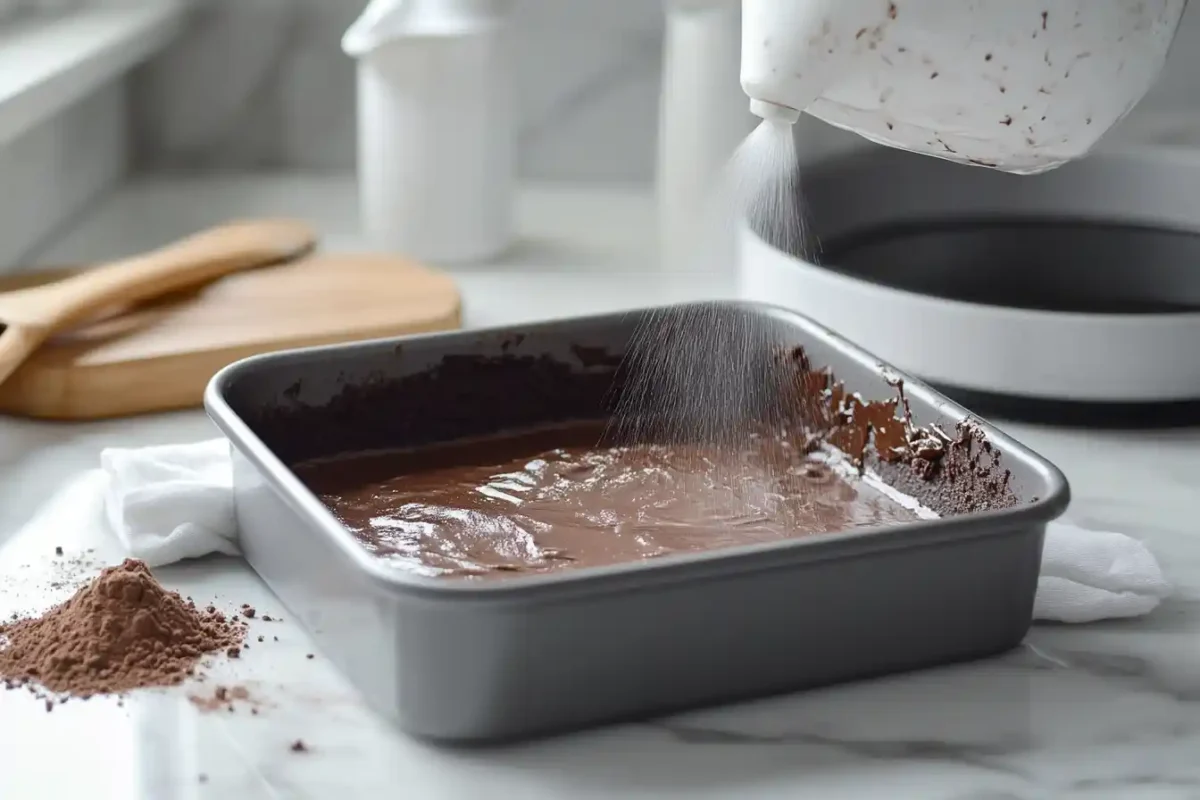Understanding Nonstick Cooking Sprays
Do you spray Pam for brownies? Pam cooking spray is a kitchen staple designed to prevent food from sticking to pans, but do you really need to spray Pam for brownies?. It’s made with a mix of vegetable oil, lecithin (an emulsifier), and a propellant that helps disperse the oil evenly across the pan. Just a quick spritz creates a thin layer of protection, ensuring your brownies don’t cling to the pan like they’re holding on for dear life!
One reason Pam is so popular for baking brownies is its convenience—it takes seconds to apply and covers the pan uniformly, unlike butter, which can leave uneven patches if you’re not careful.
Ingredients and Functionality
Nonstick sprays like Pam usually contain simple but effective ingredients:
- Oil: Often canola, olive, or vegetable oil, which creates a slick, nonstick surface.
- Lecithin: This natural emulsifier helps the oil spread smoothly instead of pooling in one spot.
- Propellant: This is what sprays the mixture out of the can.
Each component plays a role in ensuring that food releases easily from the pan. For brownies, that means no tearing, no mess—just clean slices.
Some bakers worry that the propellants in Pam may add an off-taste, but modern formulations are nearly tasteless. Still, if you’re sensitive to additives, there are alternatives, such as organic sprays that skip synthetic propellants altogether.
Different Types of Cooking Sprays

Did you know there’s more than one type of nonstick spray? If you thought Pam only came in the classic version, you’re in for a treat! There are several varieties tailored to different cooking needs:
- Original Pam: The go-to option for everyday use, including baking brownies.
- Butter-Flavored Pam: Perfect if you want a hint of buttery taste without using actual butter.
- Coconut Oil Spray: Great for adding a subtle coconut flavor—though not ideal for every brownie recipe.
- Olive Oil Spray: Best for savory dishes but can work if you’re aiming for a Mediterranean-style brownie (yes, that’s a thing!).
Each of these sprays provides a nonstick coating, but some might add an extra touch of flavor. So, if you’re experimenting with brownie flavors, it’s worth considering the spray you’re using. After all, every small detail can impact the final bake.
Preparing Your Brownie Pan
Importance of Greasing the Pan
Let’s be honest—no one wants to deal with brownies stubbornly clinging to the pan. Whether you’re using a classic metal pan or a trendy silicone mold, greasing the pan is a crucial step to ensure your brownies come out in neat, delicious squares rather than crumbled bits.
Even if your pan is labeled “nonstick,” brownies, especially the fudgy kind, can still stick because of their gooey texture. The sugar in the batter caramelizes during baking, creating a sticky surface that needs something to help it release smoothly. Skipping the grease? Big mistake! You’ll end up scraping bits of brownie off the bottom, which—let’s face it—kind of ruins the vibe of serving perfect treats.
Methods to Grease a Brownie Pan

There are a few common ways to grease a pan, and each has its own pros and cons:
- Pam Cooking Spray: A fast, easy option for evenly coating the pan in seconds. Just hold the can a few inches away and spray a light, even layer.
- Butter or Margarine: This adds a rich flavor and creates a thicker barrier than spray. However, it requires more effort to spread evenly, and if not applied carefully, some areas may be missed.
- Vegetable Oil: Using a brush or paper towel to spread oil can be effective, but it’s messier and might result in over-greasing if you’re not careful.
- Parchment Paper: For a mess-free option, line the pan with parchment paper and lightly spray or grease the paper for extra insurance. This makes it a breeze to lift the entire brownie slab out of the pan.
Each method works, but if convenience is king in your kitchen, Pam wins for speed and coverage. However, parchment paper is a strong contender for the neatest brownie release.
Using Pam: Pros and Cons
Is Pam the hero or the villain in the brownie-baking world? It’s both—depending on what you prioritize.
Pros:
- Quick and easy to apply.
- Provides consistent coverage, even in the corners of the pan.
- No mess—no buttery fingers or greasy paper towels.
Cons:
- Can leave a slight residue on some pans over time.
- Some people believe it gives a subtle, artificial taste.
- May cause excessive browning on the bottom of some baked goods if over-applied.
Ultimately, Pam works well if you’re looking for efficiency. However, if you’re after a richer flavor or prefer fewer additives, butter or oil might be your go-to.
Alternatives to Pam for Greasing
For those who prefer to avoid Pam altogether, there are several fantastic nonstick spray alternatives:
- Melted Butter: Adds a depth of flavor to the crust of your brownies.
- Vegetable Shortening: Works well for pans prone to sticking.
- Nonstick Parchment Paper: A no-fail option for guaranteed brownie lift-out—especially useful for thicker batters.
- Reusable Baking Liners: Silicone mats can be cut to fit pans and provide a nonstick surface without the need for sprays or oils.
Choosing the right alternative comes down to what you value most—flavor, convenience, or easy cleanup. No matter your preference, the goal is simple: making sure your brownies come out of the pan in one perfect, fudgy piece!
Baking the Perfect Brownie
Choosing the Right Pan Material
When it comes to baking brownies, the type of pan you use can make or break your batch—literally. Different pan materials conduct heat differently, which affects how evenly your brownies bake and how easily they release from the pan.
- Metal Pans: These are the gold standard for brownies. They heat quickly and evenly, creating that perfect crisp edge while keeping the center fudgy. However, they can cause sticking if not greased well. A quick spritz of Pam or a layer of parchment paper makes all the difference here.
- Glass Pans: These pans heat more slowly but retain heat well, meaning brownies continue to bake for a few minutes after you remove them from the oven. While glass pans offer a lovely presentation, they require extra care when greasing. Nonstick spray like Pam or melted butter is essential.
- Silicone Pans: These flexible, colorful pans make unmolding a breeze since brownies pop right out. But there’s a catch—they don’t conduct heat as well as metal or glass, so your brownies may end up underbaked unless you adjust the bake time.
Ultimately, if you want evenly baked, easily sliced brownies, a well-prepped metal pan is your best friend.
Impact of Pan Size on Brownie Texture
Pan size matters more than you’d think! Using the wrong size pan can change your brownie texture completely. A larger pan spreads the batter thin, giving you crispy edges and a chewy center, while a smaller pan creates thicker brownies that take longer to bake.
For standard recipes, an 8×8-inch or 9×9-inch square pan works best. But here’s a key tip: if you swap pan sizes, adjust your bake time. A thinner layer of batter will bake faster, while a thicker layer takes longer. And yes, even when using nonstick spray, the brownie height influences how evenly the batter releases.
Lining the Pan: When and How

Sometimes, greasing alone isn’t enough—especially if you’re aiming for picture-perfect brownie squares. That’s where lining the pan with parchment paper or foil comes in.
To do this:
- Cut a sheet of parchment paper slightly larger than your pan.
- Press it into the pan, letting the edges hang over slightly for easy lifting.
- Lightly spray the parchment with Pam or spread a small amount of butter to ensure the brownies don’t stick to the paper itself.
Lining the pan creates a “sling” that makes it easy to lift the entire brownie slab out without flipping or digging in. No more sticky edges or cracked pieces!
Common Mistakes to Av
Brownie Nutritional Information (Per 100g)
| Nutrient | Amount |
|---|---|
| Calories | 450 kcal |
| Total Fat | 24g |
| Saturated Fat | 12g |
| Cholesterol | 60mg |
| Sodium | 300mg |
| Total Carbohydrates | 52g |
| Dietary Fiber | 2g |
| Sugars | 36g |
| Protein | 6g |
Even experienced bakers can slip up when preparing their brownie pans. Here are a few common mistakes—and how to dodge them:
- Forgetting to grease the sides: Some bakers only grease the bottom of the pan, but brownies love to stick to the sides. Make sure to coat all the edges evenly!
- Over-spraying with Pam: While nonstick spray is handy, too much of it can cause the bottom of your brownies to brown too quickly, leaving a slightly bitter taste. A light misting is all you need.
- Skipping the parchment paper for gooey brownies: For ultra-fudgy brownies, parchment paper is your best defense against sticking.
- Using a wet or scratched pan: Old pans with scratches can lead to uneven baking and sticking, even with grease. If your pan has seen better days, consider replacing it or using parchment as an extra layer of protection.
Avoiding these missteps can save you from the heartbreak of torn or underwhelming brownies. With a properly prepared pan, you’re setting yourself up for brownie perfection every single time.
Frequently Asked Questions
Can I Use Butter Instead of Pam?
Definitely! Butter adds a rich, flavorful crust to your brownies. Just melt and brush it evenly on the pan. Be cautious, though—too much heat can cause it to burn. For an extra layer of insurance, pair it with parchment paper.
Is It Necessary to Grease a Nonstick Pan?
Yes! Even nonstick pans wear down over time, especially with sticky brownie batter. A light spray of Pam or a dab of oil prevents sticking and ensures a clean release.
What Happens If I Don’t Grease the Pan?
Skipping grease means your brownies will likely cling to the pan, breaking apart when you try to remove them. Even parchment paper benefits from a quick spritz to prevent stubborn edges.
Can I Use Olive Oil Spray for Baking Brownies?
You can, but olive oil’s strong flavor may overpower the chocolate. For a neutral taste, stick to vegetable oil sprays or sprays made for baking.
Does Pam Spray Affect the Texture of Brownies?
Not unless you overdo it. Too much can create a greasy or crispy bottom, but a light, even spritz helps your brownies release without affecting the texture.
Is There a Healthier Alternative to Pam for Baking?
Yes—try coconut oil, avocado oil, or organic nonstick sprays. Silicone mats and reusable parchment paper liners are also great eco-friendly, non-fat options.
Conclusion

In the end, whether you choose Pam, butter, or parchment paper, the key to perfect brownies lies in proper pan preparation. A well-greased pan ensures that your brownies release smoothly, keeping their edges intact and their texture divine. While Pam offers unmatched convenience, butter adds a touch of flavor, and parchment paper provides foolproof removal.
Ultimately, it comes down to your baking preferences. Do you want quick cleanup? Go for Pam. Craving that buttery crust? Melt some butter. Seeking a mess-free lift? Parchment paper is your best friend. Whichever method you choose, one thing’s for sure—perfect brownies are within your reach. Happy baking!
If you’d like more tips or guidance, feel free to ask! ✨Good appetit 😋✨

